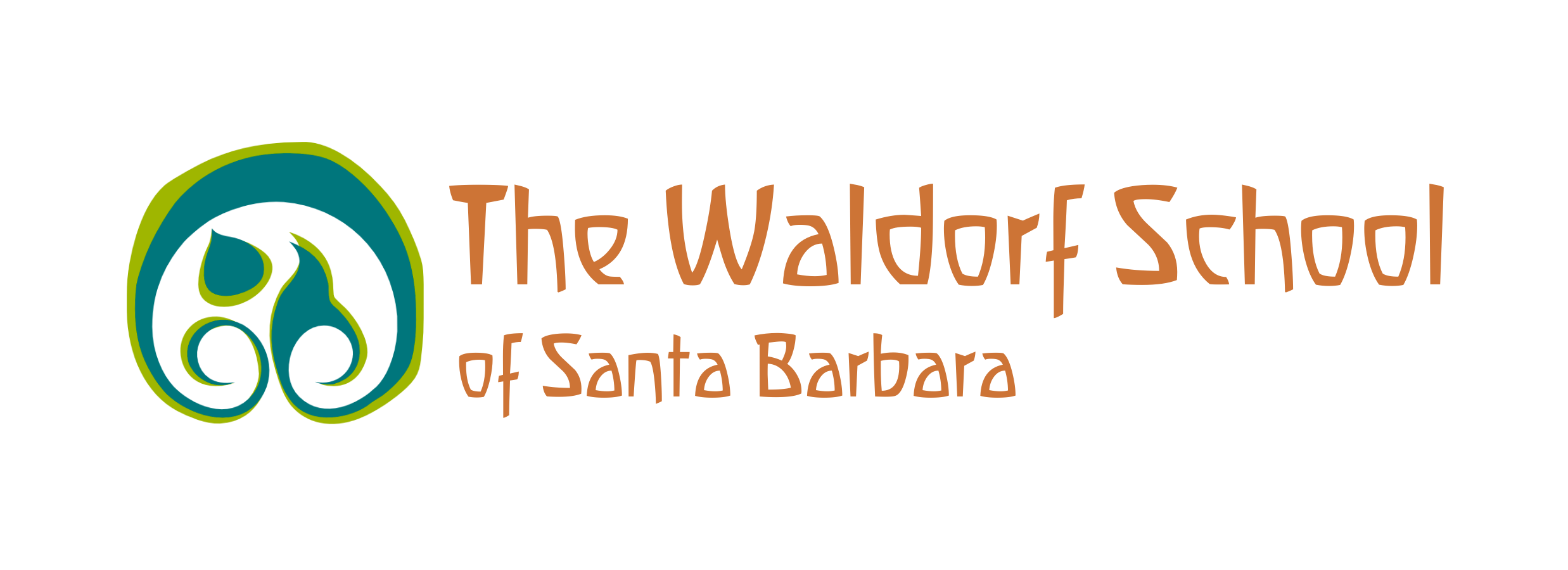Sitzfleisch
Dear Members of The Waldorf School of Santa Barbara,
Perhaps you’ve seen 17-year-old alum Kahlil Aguilar around campus. In addition to attending high school and working at a Carpinteria surf shop, Kahlil helps in Games and Woodwork classes here at WSSB. For one day Kahlil hopes to be a Waldorf teacher.
We sat down with Kahlil recently and learned of his passion for making arrows. (Archery, as you perhaps know, is an art taught and enjoyed in Waldorf schools.) Kahlil, a student of wilderness skills and Native American ways, is currently working under a mentor. With the help of his mentor, Kahlil has fully completed two arrows. He has also made 5 arrowheads and 13 shafts.
To make the arrows Kahlil gathered materials at the Santa Ynez River: chert for the arrowheads (you can also use bone, he tells us) and toyon and mulefat for the shafts. Kahlil obtained turkey feathers from a local farm for the fletchings (fletchings stabilize the arrow’s flight); and obtained pine sap to make the glue. (To soften the glue Kahlil used ground charcoal and animal fat.) Kahlil used deer sinew to bind the arrowheads and fletching to the shafts.
To make the arrows Kahlil learned how to properly select, carve, and then straighten the wood. (The straightening of the wood involves a painstaking heat-treatment.) Kahlil also learned how to select the right piece of chert and then flake and notch that chert (laborious, subtle work) into an arrowhead.
Of this elaborate and involving arrow-making process, Kahlil said it taught him “patience.”
(Working with his mentor, Kahlil is also learning about medicinal plants; fire-making; and tracking and hunting.)
On WSSB tours prospective parents often ask about Waldorf alums. What are they like? How are they different from alums of other schools? These are tough questions to answer of course. But what we say is that Waldorf alums tend to be able to harness their attention—to put their focus on something and keep it there. Waldorf alums, we say, are distinguished by their sitzfleisch.
The German word sitzfleisch (literally “sitting flesh”) refers to stick-to-it-iveness, attentional stamina, the capacity to sit down and do one’s work until completion. In a time seemingly inhospitable toward such a trait (how we moderns are prone to hasty multitasking and flighty disassociation!), those with sitzfleisch stand out.
The American philosopher William James said: “Geniuses are commonly believed to excel other (wo)men in their power of sustained attention… Their ideas coruscate, every subject branches infinitely before their fertile minds, and so for hours they may be rapt.” Scottish philosopher Thomas Carlyle said: “Genius… means transcendent capacity of taking trouble, first of all.”
We are impressed that Kahlil is sustaining his attention, taking trouble, so well. And we are impressed by what he has chosen to focus his attention on.
Good work, Kahlil!
***
Walking into Chaucer’s, our local bookstore, we noticed Jonathan Haidt’s The Anxious Generation on prominent display, a book we have mentioned in this newsletter before. Haidt’s book is causing a stir not only in the world of parenting and education but American public life in general. We have only read excerpts of the book thus far but based on the excerpts believe the book to be worthy of our community’s attention. A reviewer of the book wrote: “Haidt’s book is a tour de force. I can give it no higher praise than to say I wish we could put this book in the hands of every parent, teacher, school administrator, schoolboard member, and legislator in the country. Haidt convincingly shows that mobile technology—mostly but not exclusively smartphones—does not just correlate with all these dire mental health trends but indeed contributes to causation.”
Of his book, Haidt memorably states: “My central claim in this book is that these two trends—overprotection in the real world and underprotection in the virtual world—are the major reasons why children born after 1995 became the anxious generation.”
Waldorf education does not categorically resist technology but encourages and works toward a mindful, disciplined, and healthful relationship to it. Haidt’s book could help all of us, in this rapidly changing time, as we nurture such a relationship.
In gratitude,
The Admin Team
The Waldorf School of Santa Barbara
PS The Spell of the Day is from Third Grader Isabella Newman:
“Frontpage Topline Double Lit and Goodbye.”
(This spell, Ms. Newman tells us, is an aid to memory. It should be uttered when you are trying to remember something.)




